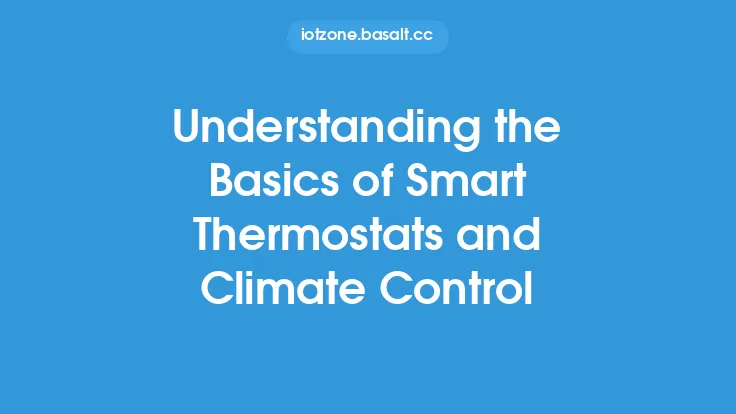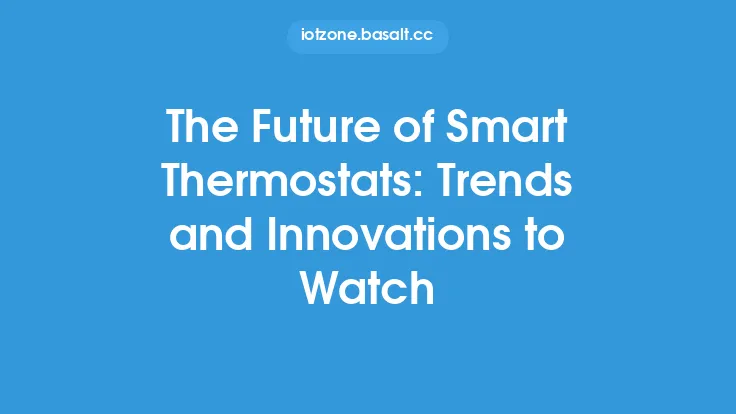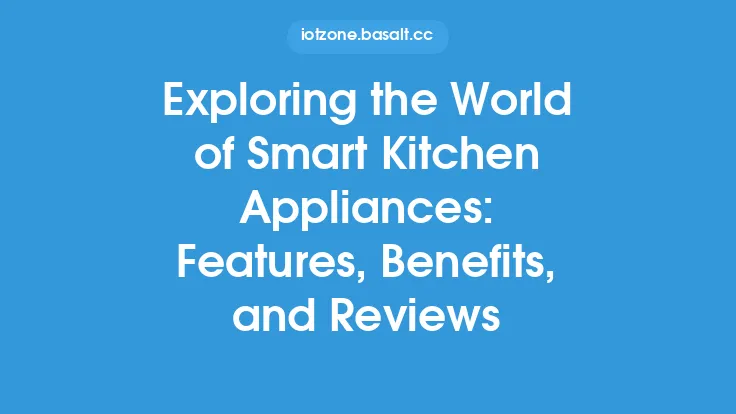The concept of smart thermostats has revolutionized the way we control the temperature in our homes. Gone are the days of manual thermostats that required constant adjustments to maintain a comfortable temperature. Smart thermostats have taken the world of home automation by storm, and their ability to learn and adapt to our temperature preferences is one of the key features that set them apart from traditional thermostats. In this article, we will delve into the world of smart thermostats and explore how they learn and adapt to our temperature preferences.
Introduction to Machine Learning in Smart Thermostats
Smart thermostats use machine learning algorithms to learn and adapt to our temperature preferences. Machine learning is a subset of artificial intelligence that enables devices to learn from data and improve their performance over time. In the context of smart thermostats, machine learning algorithms analyze data from various sources, such as temperature sensors, occupancy sensors, and user inputs, to identify patterns and preferences. This information is then used to adjust the temperature settings to optimize comfort and energy efficiency.
Data Collection and Analysis
Smart thermostats collect data from various sources, including temperature sensors, humidity sensors, and occupancy sensors. This data is then analyzed using machine learning algorithms to identify patterns and trends. For example, a smart thermostat may collect data on the temperature settings preferred by the occupants during different times of the day and night. It may also collect data on the outdoor temperature, humidity, and other environmental factors that affect the indoor temperature. By analyzing this data, the smart thermostat can identify the optimal temperature settings for different situations and adjust the temperature accordingly.
Occupancy Detection and Scheduling
One of the key features of smart thermostats is occupancy detection. This feature uses sensors to detect when the home is occupied or unoccupied and adjusts the temperature settings accordingly. For example, when the home is unoccupied, the smart thermostat can adjust the temperature to a more energy-efficient setting, such as a higher temperature in the summer or a lower temperature in the winter. When the home is occupied, the smart thermostat can adjust the temperature to a more comfortable setting. Smart thermostats can also learn the occupants' schedules and preferences over time and adjust the temperature settings accordingly. For example, if the occupants typically leave for work at 8 am and return at 5 pm, the smart thermostat can adjust the temperature to a more energy-efficient setting during this time.
Geofencing and Location-Based Control
Geofencing is another feature of smart thermostats that enables location-based control. This feature uses the location of the occupants' smartphones to detect when they are approaching or leaving the home and adjusts the temperature settings accordingly. For example, when the occupants are approaching the home, the smart thermostat can adjust the temperature to a more comfortable setting. When the occupants are leaving the home, the smart thermostat can adjust the temperature to a more energy-efficient setting. Geofencing can be used in conjunction with occupancy detection and scheduling to provide a more seamless and automated temperature control experience.
Adaptive Recovery and Predictive Modeling
Smart thermostats also use adaptive recovery and predictive modeling to optimize temperature control. Adaptive recovery refers to the ability of the smart thermostat to recover from a setback or a change in the temperature settings. For example, if the occupants adjust the temperature settings manually, the smart thermostat can adapt to the new settings and adjust the temperature accordingly. Predictive modeling refers to the ability of the smart thermostat to predict the future temperature requirements based on historical data and environmental factors. For example, if the smart thermostat predicts that the outdoor temperature will rise significantly during the day, it can adjust the temperature settings accordingly to maintain a comfortable indoor temperature.
Energy Efficiency and Optimization
Smart thermostats are designed to optimize energy efficiency while maintaining a comfortable temperature. They use advanced algorithms to analyze data from various sources and adjust the temperature settings to minimize energy consumption. For example, a smart thermostat may adjust the temperature settings to take advantage of off-peak energy rates or to optimize the performance of the heating and cooling system. Smart thermostats can also provide energy usage reports and recommendations to help occupants optimize their energy consumption.
Integration with Other Smart Home Devices
Smart thermostats can be integrated with other smart home devices, such as lights, security systems, and home automation hubs. This integration enables a more seamless and automated home automation experience. For example, a smart thermostat can be integrated with a home automation hub to adjust the temperature settings based on the occupants' preferences and schedules. It can also be integrated with lights and security systems to provide a more comprehensive home automation experience.
Technical Requirements and Compatibility
Smart thermostats require a range of technical requirements to function effectively, including a reliable internet connection, a compatible heating and cooling system, and a user-friendly interface. They must also be compatible with other smart home devices and systems to provide a seamless home automation experience. Some smart thermostats may require additional hardware or software to function effectively, such as sensors or bridges. It is essential to check the technical requirements and compatibility of a smart thermostat before installation to ensure that it meets the occupants' needs and preferences.
Conclusion
Smart thermostats have revolutionized the way we control the temperature in our homes. Their ability to learn and adapt to our temperature preferences is one of the key features that set them apart from traditional thermostats. By using machine learning algorithms, occupancy detection, geofencing, and predictive modeling, smart thermostats can optimize temperature control and energy efficiency while maintaining a comfortable temperature. As the technology continues to evolve, we can expect to see even more advanced features and capabilities in smart thermostats, such as integration with other smart home devices and systems, and more sophisticated machine learning algorithms. Whether you are looking to upgrade your existing thermostat or install a new one, a smart thermostat is an excellent choice for anyone who wants to experience the benefits of home automation and energy efficiency.





